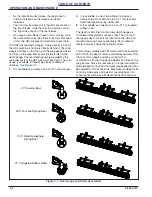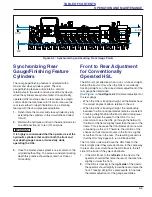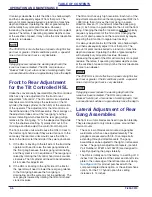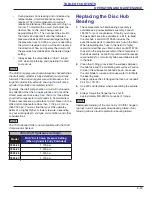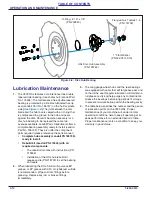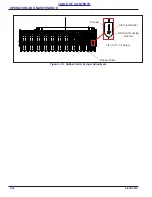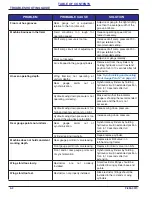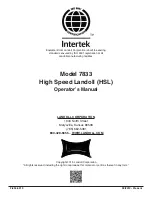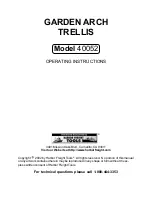
4-10
F-894-0919
OPERATION AND MAINTENANCE
The optimum working depth is considered to be 2 to
3-1/2 inches. The HSL can work on either side of this
range with good performance and results; but typically
the 2 to 3-1/2 inch depth range is the most efficient work
depth. Working depth adjustments should always be
made in conjunction with considerations of operating
speed.
The HSL can bury as much plant debris in a relatively
shallow working depth as conventional machines can at
considerable deeper operating depths because of the
mixing action inherent to the HSL if operating speed is
maintained.
Figure 4-6: Operating Depths and Adjustments for Conventionally Operated HSL
Operating Depths and
Adjustments for the Tilt
Control Operated HSL
The tilt control operated HSL is simpler to operate than
the conventionally operated HSL. The tilt controlled HSL
has only one single point depth control for the entire
machine. It located just to the left of center on the hitch.
Every rotation of the control crank adjusts the working
depth by a ¼ inch, or four (4) turns to an inch of operating
depth. The tilt cylinder combined with the tilt control
system, control the operating depth of the rear row of
disc units relative to the front row of disc units (see the
previous section “Front to Rear Adjustment for the Tilt
Controlled HSL”). Therefore, only one overall depth
control is required.
While there is only one single point depth control, the
rear reels play a major role in the final performance of the
HSL. If the down pressure on the reels becomes too
extensive it will have an adverse effect on the overall
system. If too much down pressure is applied to the rear
reels they will hold the rear row of disc units out of the
ground. This will cause the HSL to track to the left hand
side. Typically, when this is the case, the operator will
observe that the rear urethane spring in the draft cushion
assembly will be slightly ballooned. Too much down
pressure on the rear reels can also lead to bouncing. On
the other hand, too little down pressure will cause the
machine to have decreased stability in the field. Too little
down pressure also tends to leave a less desirable field
finish and does not reconstitute the soil profile to an
optimum level.
Rear Depth Control Tube
Front Depth Control Tube
Rear Depth Adjustment Handle
Front Depth Adjustment Handle







